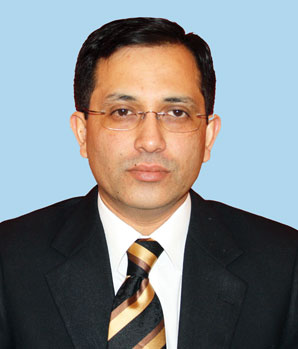
Fear of the unknown, circuitous budgeting system and poor optical fibre network are only some of the challenges states face while adopting new technologies, says Bipul Pathak, Commissioner-cum-Secretary, IT and Science & Technology, Government of Jammu & Kashmir
Adoption of new technologies and the challenges involved in the implementation of e-governance initiatives are immense, especially in the states where Information Technology is still in the early stages.
Speaking from my experience in the state of Jammu & Kashmir, the biggest challenge a state government faces is the process of reengineering to implement initiatives like cloud as it opts for the path of egovernance. Many of the government departments are unable to understand the modalities on how they can avail these services in a pay-as-you-go format, or the likes. Besides, for that to happen, they also need to change their budgeting systems, which involve lots of consultation with several other departments.

So, initially, it is difficult for the information technology department to try and convince the user departments to change their way of working, way of thinking as well as the manner of budgeting, so that they are able to adopt these new technologies, platforms or infrastructure.
Fear of the unknown

The states, which are lagging behind in terms of egovernance, have a lot of apprehensions in terms of privacy of data and its protection. So, these kinds of initiatives are a big challenge for the civil servants at the middle and the lower levels to understand as they are not exposed to the new IT initiatives and new systems. Another apprehension reigning high in the mind of top level civil servants while adopting these technologies is about data privacy, handling the breaches in line with the law and their suitable implementation.
My experience about the ability of police in handling cyber crime issues is marred by scepticism. They struggle to understand even small technological things. So, to expect them to convert a cyber offence into a foolproof prosecution case may be like asking for too much. It is also one of the issues that need to be kept in mind while escalating egovernance. The police department should understand data privacy in the global context and bring it at par with the international standards.
As for the Government to Customer (G2C) services to go onto cloud in states like J&K, the major hurdle is connectivity. In my experience, I found out that even in a state like Andhra Pradesh, which rates high in terms of Information Technology, telecom connectivity becomes deceptive barely 50 to 60 km away from Hyderabad – either the signal is very low or it is simply nil. Even the initiatives taken by the Government of India in terms of connectivity would not help because of low penetration levels. And, owing to this, the G2C services are unlikely to be able to use the full potential of the cloud technology in the near future; maybe, that happens sometime in the distant future.
Leveraging pvt cos
A suggestion to the Government of India would be to make the penetration of the national optical fibre network at the panchayat level fast as that would leverage the capacities of private sector telecom companies also, and not only the public sector firms. Some public sector companies like BSNL and MTNL have been regulated and licensed, and similar things can be done even in the case of private companies. In fact, there are private telecom operators with huge operations in several parts across the country. But funding and licensing is not there for them. The fact remains that licensing and regulation of private telecom companies can possibly take the penetration of optical fiber network to panchayats at a much faster pace.
Click here to Watch Bipul Pathak Speaking Live
Be a part of Elets Collaborative Initiatives. Join Us for Upcoming Events and explore business opportunities. Like us on Facebook , connect with us on LinkedIn and follow us on Twitter, Instagram.












